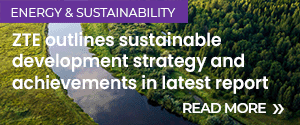Connectivity in Africa has been a hot topic for decades, often framed as a bastion of opportunity due to the continent’s immense population still awaiting digital access.
But where opportunity exists, so do challenges – and Africa faces unique obstacles in its efforts to connect its population and deliver life-changing benefits.
According to industry body the GSMA, Sub-Saharan Africa still has a substantial usage gap. At the end of 2023, mobile internet penetration stood at 27%, but a staggering 60% of the population remained unconnected.
The GSMA reported that the mobile industry contributed US$140 billion to GDP in the region and suggested this could increase by US$30 billion if key barriers to connectivity are lowered. Beyond economic gains, improved connectivity can also support development goals across healthcare, education and finance, thus driving broader socio-economic growth.
A significant number of the unconnected population live within network coverage areas but remain offline due to adoption barriers such as affordability and lack of digital skills. Additionally, 13% of the Sub-Saharan population is not covered by 4G – the minimum standard required to effectively participate in the digital economy.
These regions are often overlooked by pan-African mobile network operators. The return on investment in sparsely populated rural areas is simply not there, especially compared to the densely populated urban centres of Accra, Kinshasa and Lagos.
GlobalData senior analyst Ismail Patel (pictured, below) said Sub-Saharan Africa is “at the bottom of the table for fixed connectivity” and noted there has been “no serious prospect” of laying fibre or even copper cables in African soil, particularly in low-ARPU rural locations that have remained “untapped for the past two decades”.
This is where satellite connectivity is stepping in. Elon Musk’s SpaceX has launched its low-earth orbit (LEO) satellite constellation, Starlink, which has become a major disruptor – not just in satellite but in the connectivity industry as a whole – by connecting consumers directly without traditional telco partnerships, unlike many of its satellite peers.
Also on the horizon is Amazon’s Kuiper constellation, which appears to be embracing the partnership model. Other satellite players like Intelsat, Eutelsat, and SES are also active, with operations across both LEO and Geostationary Earth Orbit (GEO).

Patel noted that satellite connectivity isn’t new – satellites in Highly Elliptical Orbit (HEO) or Medium Earth Orbit (MEO) have long existed – but have historically been “price prohibitive”. LEO providers such as SpaceX and Amazon are now breaking down that cost barrier to make satellite communications accessible to mass markets.
“What the LEO market has done is potentially unlocked this opportunity, not only for Africa, but also for the rest of the world, as either a replacement for fixed and mobile traditional connectivity, or as a technology to install where there is no fixed or mobile connectivity with any scale of robust data connectivity or broadband,” said Patel.
In Africa, some areas will see LEO satellites become the primary source of connectivity, while in others, traditional fibre and cellular networks will continue to carry the load.
Despite the buzz around Starlink and the anticipation surrounding Kuiper, Patel said it would be misguided to assume they will simply displace traditional operators. Instead, he believes collaboration is key to achieving widespread connectivity in Africa.
Rhys Morgan (pictured, below), Intelsat’s EMEA Regional Vice President, said partnering with mobile network operators (MNOs) is “fundamental” to extending connectivity and delivering tangible benefits to Africa’s growing, youthful population.
“If you’re deploying infrastructure locally, you’ll need to operate under somebody’s licence – work with them. So obviously, the mobile operators have got fairly broad often, but certainly very meaningful licences to operate on the ground. So that partnership is important, but equally, we develop the services in conjunction with our partners, so that those services are relevant and compelling in the market,” said Morgan.
He added that operator trust and reputation are also crucial, especially as concerns over data sovereignty rise among African nations.
Barriers to connectivity adoption
One of the key barriers to getting online in Sub-Saharan Africa is cost – whether it’s the price of terminals, handsets, or the data itself.
But Morgan believes that if the right solutions and use cases are provided – delivering clear productivity gains – users will pay, provided the pricing is reasonable.
He pointed to mobile money as a hugely successful example, empowering small businesses and fuelling local economies. However, he again stressed the importance of partnerships to ensure infrastructure is widespread enough to make such use cases viable. As an example, he cited a successful deployment with Orange in Mali, where Intelsat worked with the operator to provide the appropriate bandwidth and dimensions to strike the right balance between quality and cost.

Patel acknowledged affordability as a key issue, but noted privacy is also a concern. Foreign providers may be viewed warily by governments keen to protect their citizens’ data.
“A foreign operator like Starlink obviously poses problems for national governments, so it’s going to be a trade-off between that and an operator like Starlink offering the services. Starlink obviously is headed by Elon Musk, who has demonstrated in recent months that he might not be the most palatable partner for any sort of business transactions. So this is why some would be reticent to giving Starlink carte blanche to operate in that particular market without assurances of privacy – or either that, or governments might be incentivising operators to go into partnership with Starlink so they retain some degree of control of data being trafficked in and out of the country,” explained Patel.
Disruptive Starlink and Kuiper
Despite being in direct competition with Starlink and Kuiper, Morgan welcomed the innovation they bring – both in terms of satellite technology and user-friendly tools – helping move satellite out of its niche and into the mainstream.
Patel noted that these two players also represent a threat to traditional operators, echoing comments made by Nitesh Singh of Accenture during last year’s Africa Tech Festival.
According to Patel, Starlink’s entry into the DRC directly triggered the recent partnership between Vodacom and Orange.
“So that partnership is as a direct result of Starlink entering the competitive scene. These rural and semi-rural areas that haven’t been previously well [served], are now being looked [at] as a new organic growth opportunity so that an LEO company like Starlink doesn’t eat into that opportunity,” said Patel.
He added that while these regions may not deliver “huge gains,” they represent the only logical path for future organic growth – a path that could be lost to the likes of Starlink and Kuiper if operators don’t move quickly.
Still, Patel criticised major players like Vodacom and Orange for not acting sooner.
“It might already be too late for them (operators)… in certain segments it’s going to get to market far too quickly compared to MNOs deploying that requisite infrastructure,” said Patel.
“That’s just one market of many, where Starlink is licenced or is about to be licenced – the operators dropped the ball there. They viewed these markets as a low ARPU market, so they focused supply on urban areas or areas where there’s high ARPU, so I think this might be a little too late.”
Governments in Sub-Saharan Africa now face a dilemma: whether to license LEO providers to deliver widespread connectivity – potentially undermining the financial viability of traditional MNOs, which are often among the largest contributors to national economies.
Patel said it’s still unclear how governments will strike the right balance, though some regulators have taken note of MNOs failing to meet coverage obligations outlined in their licences.
“They are using Starlink to either incentivise MNOs to deploy in those regions, or to simply boost connectivity and economic growth – or stimulate economic growth, rather – in these regions that have been underserved.”
Looking ahead, Patel expects more mature markets such as Kenya, Nigeria and South Africa to benefit first from satellite deployments – particularly for small businesses that require robust connections. He predicts that private home connectivity will mature further within five years.
From the perspective of satellite providers, Morgan said governments need to provide a clear and fair regulatory environment to ensure widespread access.
“Where regulators have a good, comprehensive framework, as most regulators do today across the continent, and they enforce it uniformly – we wouldn’t view it as a hurdle. In fact, we would say that that’s a well-managed telecoms market, and somewhere that we would be comfortable to operate,” said Morgan.
He added that LEO will not dominate the market alone; a mix of LEO, GEO, and MEO satellite systems will be necessary to meet Africa’s growing demand for data.
Africa remains a bastion of opportunity, and with its young, tech-savvy population, the future looks bright. To support this next generation, satellite technology may well be the tool that helps the continent realise its full potential and rise to new heights.































